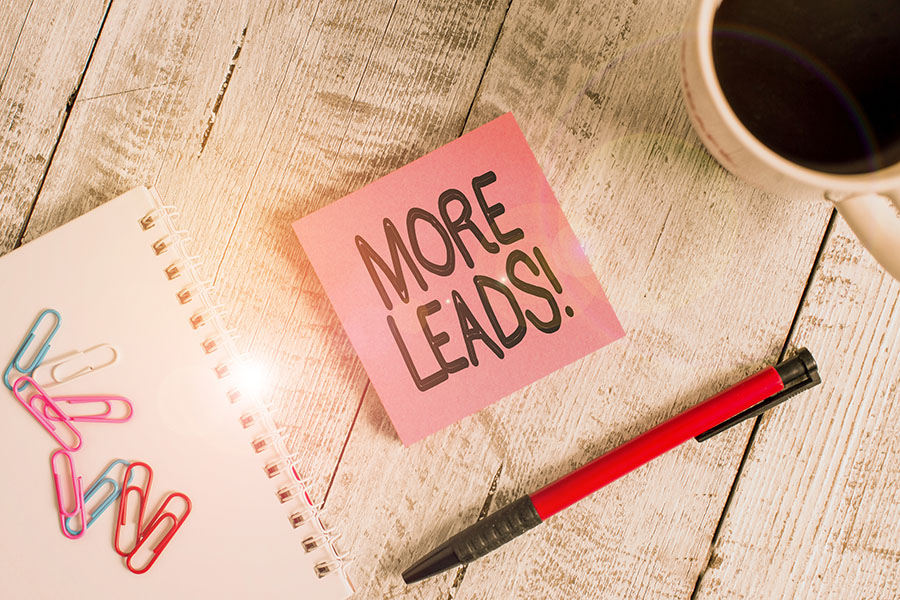
Product qualified leads (PQLs) are warm leads with the highest likelihood of conversion among sales leads since they already recognize your product’s value. Minimum viable PQLs have tried or are currently using your product’s free version and are showing positive buying signals. When generating PQLs, salespeople must observe buying signals, like hitting a free product’s feature limits, and use the right strategies to discover areas for upselling and other sales opportunities.
Examples of Product Qualified Leads
Sales teams manage different types of leads, including cold leads, warm leads, and hot leads. A PQL is a warm lead that has interacted with your product but is not ready to make a purchase decision. For example, if a lead signs up for a free trial subscription, they can be labeled as a PQL. Sales teams must then watch out for buying signals that indicate if the PQL is ready to close the deal, which in this case would be subscribing to a paid plan.
Here are some typical actions a prospective customer might take to be considered a product qualified lead that’s ready to take the next steps.
- A user or different users of an account keep using a specific product feature
- A user always hitting the limit for a certain product feature of a free product version
- Adding more users or inviting teams to use a product
- Using other product features than they used to, like using advanced free tools of customer relationship management (CRM) software
- The number of users exceeds the user limit of a free product or subscription
Benefits of Product Qualified Leads
Product qualified leads have the highest likelihood of turning into paying customers among all types of leads. Therefore, PQLs should take high priority when it comes to conversion. Below are the top benefits of directing your efforts in generating PQLs:
- Improve customer relationship: One strategy for generating PQLs is determining the behavior you observed through your first interactions with leads—like when a PQL first subscribed to your free trial. This enables you to capture similar behavior that you can use to determine the next best step for other leads. By proactively identifying customer needs, you increase your trust rating and enhance customer relationships.
- Boost your sales: PQLs can help boost sales because they have the highest lead-to-customer conversion rate among other lead types. If your sales team plans your activities carefully around addressing the pain points and goals of PQLs, you can save more time and effort in driving sales since they’re the types of leads most likely to convert faster.
- Increase overall revenue growth: Top-performing reps generate PQLs by analyzing how each prospect signs up for a free account or any other buying signal. After this, they move leads through the customer journey by implementing tailor-fit sales activities. This omnichannel, personalized strategy increases lead-to-customer conversion, helping boost revenue.
Identifying Product Qualified Leads
PQLs have the authority and budget to make a purchase, and have also expressed a need for your product or service, similar to a sales qualified lead (SQL). The plus factor that makes the difference between PQLs and SQLs is the product interaction.
In the sales process, PQLs are in the last stage before buying, wherein they need to make a critical decision whether to say “yes” or “no” to a sales offer. Therefore, proper follow-up is essential to close the sale. Reps must also be ready to answer complex questions and handle term negotiations. Learn more about the PQL’s position in the sales funnel, pipeline, and sales process below.
In the sales funnel, PQLs are in the consideration and decision stages. Because PQLs are already familiar with your brand and they understand the value of your specific product or service, they usually show buying signals when they already have the budget approved. This is also true when key decision-makers have already agreed to push through with the purchase.
Let’s say a PQL using a free version of a project management solution, has already exceeded the number of users and decided to upgrade its package. Before doing so, the PQL sent an email to your sales team to get more information about higher-priced plans. You can take that as a buying signal that the PQL might be ready to make a purchase.
In the sales pipeline, PQLs belong to the latter stages, which include negotiating terms and closing the deal before making the final decision. Negotiations involve multiple parties—the prospect, sales team, and other relevant departments.
When the PQL is ready to move forward, contract signing and onboarding follow. At this stage, the sales rep sends the new customer over to an account executive who will be their new point of contact. For other businesses, the deal-closing stage happens once invoices are sent and the PQLs process payments.
After closing the deal, the account management team implements ongoing efforts to nurture and retain this new customer for future sales opportunities, such as plan upgrades. At this point, continuous marketing paves the way to selling new products or services or upgrading them. This is when upselling and cross-selling come into play, which require inputs from the sales team for long-term customer partnerships.
Pro tip: Constant communication through a CRM’s video conference calling feature keeps everyone on the same page. Freshsales is one of our top recommendations for a CRM with such robust collaboration features.
PQLs are in the latter stages of the sales process, wherein reps’ expertise in handling objections or complicated questions is tested. Intense and lengthy negotiation processes can take place before finalizing a deal. Hence, sales teams must demonstrate a high level of knowledge of the product and agreement, like how much discount or leeway they can offer to seal the deal.
Pro tip: Learning how to create a sales process that is suitable for your team can make a big difference in attracting PQLs. Therefore, it is crucial to understand how different tasks help move PQLs through your sales pipeline to standardize the selling workflow of sales team members.
Qualifying Questions for Product Qualified Leads
Multiple lead scoring is crucial in categorizing a prospect as a PQL by understanding the actions the lead is taking across the entire buyer cycle. This lead generation strategy involves implementing several scoring rules or models for different products, geographies, objectives, or other data points instead of just one. Below are some questions you can use to help categorize leads as product qualified.
1. Have You Gone Over the User Limits?
This question raises the product qualified lead’s awareness about their product usage. Let’s say a lead subscribes to your tech solution’s free trial and later exceeds their user limits. This is an example of a buying signal that sales reps can take to upsell the lead with higher-paid plans.
2. Do You Need More Advanced Features?
Free products often have limited, basic features, and the need for more advanced features locked behind a paywall is a great opportunity to see if a user is product qualified. For example, if a prospect who’s subscribed to a free trial raises a lot of questions about plan upgrades, consider this a buying signal for a PQL.
3. Are You Expanding Your Business?
Unlike marketing qualified leads (MQLs), who still need a lengthy interaction with the sales team, PQLs may have tried the free trial or basic package and are only waiting to grow their business for an upgrade decision. Therefore, sales reps must go the extra mile, such as by checking the warm lead’s company for announcements about business expansion to upsell a feature or plan at the perfect timing. This increases the likelihood of converting the PQL into a paying customer.
4. Are You Satisfied With Your Current Subscription?
If a lead activates a free or basic service, asking this question after one to two days, a week, or every month thereafter via a follow-up email is highly effective in generating potential PQLs. You can use one of our sales follow-up email templates and select what’s best for your current sales situation. Certain CRMs, like HubSpot, usually have premade email templates, enabling users to implement follow-up email marketing campaigns.
5. Why Are You Inviting Teams to Use Our Solution?
Your sales team might notice account admins adding more users or inviting other teams to use your solution. This is a buying signal you shouldn’t disregard. Asking this question through a phone interview or email survey can help you categorize product qualified sales leads because it is a sign that the lead has increasing interest in your solution or the business is growing.
PQLs vs Other Types of Leads
Remember that categorizing PQLs is just one stage of the entire sales process. Depending on how you generate qualified leads and their interest level, prospects will have different classifications of being “qualified.” The chart below shows the major differences among the common types of sales leads:
Pro tip: Sales teams can automate a sales record’s life cycle status and lead generation activities by using a sales-focused customer relationship management (CRM) system such as Salesforce Sales Cloud. This software is powered by artificial intelligence (AI), advanced data analytics, and reporting tools for automating complex lead management tasks. It also lets you create customized email templates to follow up with PQLs.
Salesforce Sales Cloud powered by AI assistant Einstein for drafting sales emails (Source: Salesforce)
How to Convert Product Qualified Leads to Customers
Sales teams nurture PQLs to convert them into paying customers by implementing the right techniques, such as performance monitoring—a crucial aspect of sales management. Here are some practical tips on how you can convert PQLs to customers:
- Conduct regular follow-ups: Reps miss out on 76% of qualified leads by not following up. Your sales team must regularly contact leads by phone, email, or voicemail to determine if they are ready to upgrade or accept an upsell. We highly recommend sending five to eight follow-ups to entice the prospect to book a meeting or attend a sales demo for an upselling session.
- Set PQL-to-customer criteria: Sales teams can set parameters that prospects must meet to be considered a PQL and eventually, a paying customer. For example, you can consider a PQL as a customer once the lead agrees to the terms like pricing or the number of users in a plan. In the same way, a PQL is ready to become a customer when they are already asking to prepare the paperwork for signing.
- Obtain relevant feedback: Feedback gathering is crucial in determining the lead’s buying intent and sales readiness to close a deal as soon as possible. It also helps sales teams align goals with their customers’ needs and strategize the next best steps to convert the PQL into a paying customer. A CRM with prebuilt or customizable survey forms can be used to get customer feedback on sales activities implemented.
- Use the right tools: Utilizing the right tools in analyzing, storing, and managing data helps convert prospects to PQLs and customers faster. For instance, business intelligence (BI) tools like Tableau, one of the best sales dashboards, give you access to critical usage data such as when customers reach the user limit for a free trial. This promotes a timely post-sales demo follow-up to increase the chance of closing a deal.
Frequently Asked Questions (FAQs)
Product qualified leads (PQLs) have the highest chance of getting converted to paying customers. Sales teams must prioritize increasing their PQLs to boost the number of potential sales. Hence, sales activities must focus on monitoring the buying signals for targeted product qualified lead generation.
Implementing product qualified leads across the business involves identifying buying signals and implementing their appropriate playbooks. Examples of buying signals include inquiries about higher-priced plans or usage monitoring that shows the subscriber has exceeded the user limit. Business owners and sales managers must ensure the next steps can fully satisfy and convince PQLs to become paying customers.
Product qualified leads have experience using your product through a free version or limited-time free trial. Marketing qualified leads (MQLs) have shown interest in your product or service after being exposed to a marketing campaign like a social media ad. MQLs convert to sales qualified leads (SQLs), who are ready to engage with sales. On the other hand, PQLs have passed the MQL and SQL stages and had sales demos but aren’t ready to purchase yet.
Bottom Line
Product qualified leads (PQLs) already understand the value of your offerings. Generating PQLs involves paying close attention to buying signals like reaching the user limit of your product’s freemium plan. The lead generation approach for PQLs is a multifaceted, complex, and ongoing process of nurturing, classifying, and analyzing lead behaviors to determine the best time and sales techniques to convert PQLs to paying customers.





